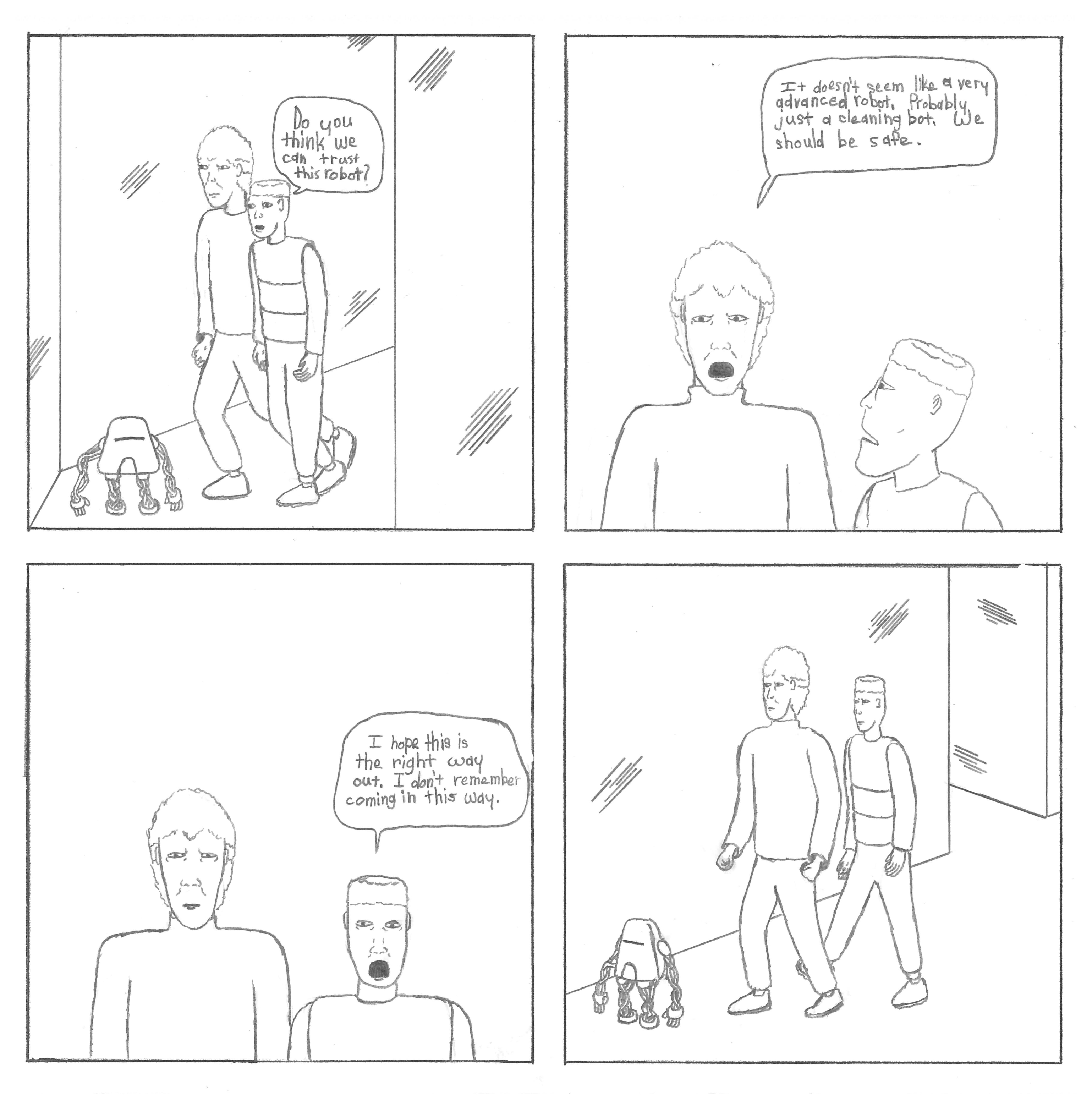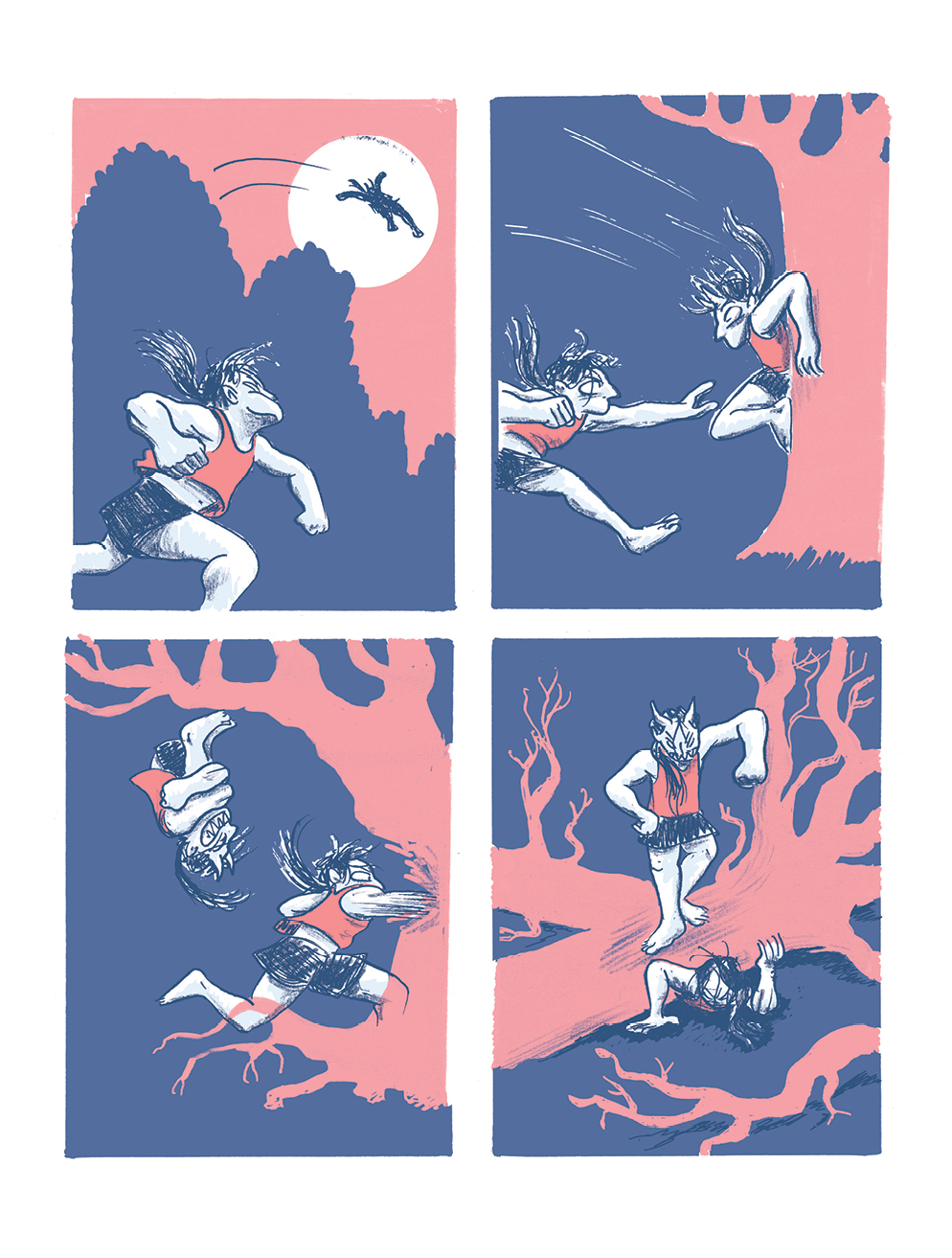Comics WorkbookDecember 4, 2017Essaysby Jackie Kirby
I. INTRODUCTION, or an Apology to Charles Olson
OPEN COMICS
(dynamic (plural (contradictory
vs.
CLOSURE
(Or what Charles Olson called “The NON-Projective,” those comics which print bred and which is pretty much what we have had, in English & American, and have still got, despite the work of Frankie: it led “the alt”, over a half-century ago now, to see it (DC’s, Marvel’s) in the light of “the Egotistical Sublime”; and it persists, at this latter day, as what you might call the private-soul-at-any-public-wall)
II. OPEN SUPERMAN, an introduction to Language Poetry and open form in poetry and comics
“A moment yellow, just as four years later, when my father returned home from the war, the moment of greeting him, as he stood at the bottom of the stairs, younger, thinner than when he had left, was purple—though moments are no longer so colored. Somewhere, in the background, rooms share a pattern of small roses. Pretty is as pretty does. In certain families, the meaning of necessity is at one with the sentiment of pre-necessity. The better things were gathered in a pen. The windows were narrowed by white gauze curtains which were never loosened. Here I refer to irrelevance, that rigidity which never intrudes. Hence, repetitions, free from all ambition.”
This opens the first section of Lyn Hejinian’s My Life (1980), “A pause, a rose, something on paper.” Hejinian is a founding member of the Language school of poetry, whose work emphasizes theory-based writing, finding it’s foundations in poststructuralism as well as earlier avant-garde movements such as Russian Futurism. In its original composition, My Life comprised thirty-seven prose paragraphs, each comprised of thirty-seven lines. Each section dealt with a year of Hejinian’s life (She was thirty-seven, as you may have guessed). My Life serves as an excellent example of Hejinian’s notion of an “open text,” which she writes about most notably in “The Rejection of Closure.” The open text, in short, invites active participation from the reader, and provides a space where author and reader may meet as equals, collaborating in the production of meaning. A “text,” of course, may be used to describe all sorts of cultural productions. In this article, I wish to examine Hejinian’s poetics of an open text, and their use in the comics medium, while pushing towards an aesthetic of open comics.
Henjinian’s theory of the open text promotes a poetics where the author willingly relinquishes her authority over the reader, and instead sees the two as equals in a collaborative project of producing a text-as-meaningful. The open text recognizes the incompleteness of all texts, and the impossibility of achieving closure. She distinguishes this from a “closed text,” which already knows and contains (or at least claims to know and contain) everything. The closed text requires no work from the reader; it already knows everything so it needs only to impart knowledge. It is static, as it has no connection outside itself—it is complete within and need not change. Though the perfectly closed text is “unimaginable” to Hejinian, she remarks that if it could exist, “it would be insufferable.” The open text, on the other hand, does not claim to know anything, it is curiosity. It generates knowledge rather than imparting it. It is desire for knowledge, not knowledge itself. In its generation of knowledge, the open text produces new meanings each time it is read, even by the same reader. This plurality of possible meaning is what makes the text “open.” The openness of a text corresponds directly to its capacity to provide a dynamic plurality of possible meanings.
Hejinian gives no examples of closed texts in her essay, but in a later introduction notes:
“The coercive, epiphanic mode in some contemporary lyric poetry can serve as a negative model, with its smug pretension to universality and its tendency to cast the poet as guardian to Truth. And detective fiction can serve as a positive model, presenting an ultimately stable, calm and calming (and fundamentally unepiphanic) vision of the world. In either case, however pleasurable its effects, closure is a fiction, one of the amenities that falsehood and fantasy provide.”
Additionally, in a lecture on the subject, she mentions Superman comics along with detective fiction as “positive examples.” This reference to Superman is primarily taken from Umberto Eco’s analysis of early Superman comics in The Role of the Reader.(1979). This is perfect, then, for our purposes as makers of comics. Comics have already been inaugurated and validated within this theory of literature, setting precedent to continue the analysis.
Understanding the aesthetic merits of an open text is perhaps made easier by looking at Hejinian’s work in tandem with sociologist Wolfgang Iser’s phenomenological approach to reading (1972). Iser views the meaning and totality of a literary object to be a virtual, dynamic and contradictory thing. Its gestalt, or the perceived unity and oneness from a configuration of parts, does not exist in the text itself, nor in the mind of the reader, but in the co-operation of the two: the act of reading itself. The text is a set of raw materials provided by the author. In a text, information is presented in the form of discretely separated units (in comics, panels; in prose, sentences; in verse, lines) juxtaposed in a pattern according to the author’s artistic desires. Iser writes, “The sentences are ‘component parts’ insofar as they make statement, claims, or observations, or convey information, and so establish various perspectives of the text. But they remain only ‘component parts’—they are not the sum total of the text itself.” These sentences are building blocks of a not-yet-existing meaning, which will be produced through the act of reading the text. Through the reading process, the reader assembles the “component parts” into a coherent whole. In comics, we can think of this as the way a reader navigates through panels to produce meaning. The reader’s imagination and memory give shape to the interaction of distinct parts “foreshadowed” by the sequence and structure of panels. The information present in the material comic is processed through the reader’s imagination and experience, the result being the production of the comic-as-meaningful.
If I may make an analogy: consider the comic an unopened box of Ikea furniture. The author has provided the parts needed to construct the furniture she has in mind, and has provided a set of instructions on their assemblage as well. However, once bought, the customer has no obligation to follow the instructions. Her assemblage of the furniture is affected by her knowledges and imagination. She is limited only in the material she has with which to construct. It is her own decision to follow the instructions or not. Regardless, her finished product will inevitably be different from that of any other customer who bought the same piece.
In this way, the comic’s gestalt is not created solely by the author, as she only provides panels and data, nor is it entirely produced by the reader, as she must use the material provided by the author to realize the text. It is a dynamic relationship between material (the author’s work) and aesthetic (the reader’s realization) productions of meaning.
The open text is dynamic, and interactive, as reading is most pleasurable when it is active, and incites the imagination. In “opening” a text, the author has at her disposal several tools: literary, technical, aesthetic etc. The open text’s dynamism, as opposed to the closed text’s stasis, is what incites pleasure and plurality of meaning in the reader and the gestalt respectively. Hejinian and Iser provide examples of these in their poetry and criticism. The primary techniques I will describe here, as well as providing examples from My Life, and Hejinian and Iser’s critical analyses, finally examining the use of each technique in the making of comics.
III. OMISSION, it’s about what you’re not seeing
A major aspect in reading pleasure for both Hejinian and Iser is the use of intentional omission by the author. If a text is built out of discrete, intact units, then the author may place gaps between each unit (not literal, physical gaps—or maybe—but informational gaps). Each unit both presents data and foreshadows a future meaning. It creates a sense of anticipation in the reader. The following units then either realize the previously foreshadowed meaning or don’t. This non/realization then forces the reader to look retrospectively at the previous unit, its foreshadowed meaning now changed with the advent of new units of data. For example, take the opening sentences of Sam D’Allesandro’s short story “Electrical Type of Thing” (as collected in The Zombie Pit (1989): ““There’s more to a relationship than acquisition.” Scott was busy trying to talk me out of something.”
“There’s more to a relationship than acquisition.” This sentence presents a statement on relationships which foreshadows a further statement on relationships. Anticipation: If there is more than acquisition, what is it? But further, the sentence is surrounded by quotation marks. It is a spoken statement, and the quotation marks incite further anticipation: who is speaking, and to whom?
Scott was busy trying to talk me out of something. This sentence relieves the reader’s anticipation of the nature of the speaker (Scott) and the one being spoken to (me). Retrospectively, the phrase previously read is now a phrase coming out of Scott’s mouth. However, it does not realize any of the anticipated statements on the nature of relationships, other than its literal enactment of a relationship between Scott and the narrator. In fact, it adds more anticipation, a “something” is mentioned. Scott’s previous statement is now read as an attempt to talk the narrator out of “something,” presumably having to do with a relationship. However, the nature of that “something” remains dubious.
D’Allesandro, a brilliant writer, uses multiple layers of anticipation and retrospection in only two sentences, setting the stage for a reader to actively engage with his work. I chose this passage to showcase how even in a seemingly linearly structured prose passage, a talented author makes use of omission and the anticipation/retrospection process. Turning back to Hejinian’s poetry, however, we may see what results when the enactment of this process is brought to the foreground of a text’s aesthetics.
D’Allesandro omits bits of data in between his sentences (in the passage we have read), but the relationship between each subsequent sentence is relatively apparent. In My Life, contrastingly, Hejinian’s sentences have almost no immediate correlation. A passage from “A pause, a rose, something on paper” reads:
“I was in a room with the particulars of which a later nostalgia might be formed, an indulged childhood. They are sitting in wicker chairs, the legs of which have sunk into the ground, so that each is sitting slightly tilted and their postures make adjustment for that.”
In an initial reading, one may try to link these sentences as describing a single scene, however the disconnect of the verb tenses (“I was” and “They are”) discredit that connection. Therefor the onus is entirely on the reader to “complete” the text. The “I” and “they” are connected by juxtaposition and repetition of the sentences’ opening structure (Pronoun verb), but the reader must decide exactly how they are connected. Hejinian writes:
“The reader (and I can also say the writer) must overlap the end stop, the period, and cover the distance to the next sentence. Meanwhile, what stays in the gaps, so to speak, remains crucial and informative. Part of the reading occurs as the recovery of that information (looking behind) and the discovery of newly structured ideas (stepping forward).”
Therefore, the amount of work a reader must do to “overlap the end stop” and produce meaning from the text increases as the gaps of information between subsequent units increases. A greater burden of work for the reader corresponds to a larger capacity for meanings in a text. By intentionally omitting large amounts of data from unit to unit, an author opens her text up to a multiplicity of meaning.
Let us look for similar examples in comics. Taking a four-panel strip from Lynda Barry’s Ernie Pook’s Comeek (1979-2003), I will break down the first two panels as I did D’Allesandro’s prose.
(Ignoring the title and by-line) Caption: An opossum, says Freddie, has 50 teeth and 13 nipples. My aunt says ‘For the love of God I’m trying to eat.’ Image: A boy sits holding a cup, sitting in front of cabinets. The text informs us of a conversation going on, one speaker is established: Freddie, and then two more, as the phrase “my aunt” introduces not only the “aunt” character, but a speaker as well. It also establishes a relationship between the speaker and their aunt. A conflict is set up between Freddie and the speaker’s aunt. The pictured boy the reader assumes is Freddie, though that is not explicitly stated, and only through juxtaposition of the caption, which highlights Freddie’s action (speaking) and the image of a single boy is the reader led to think the boy pictured is the Freddie in question (unless, of course, they are familiar with the strip and its cast). The image of Freddie sitting with a glass in hand in front of cabinets combined with the speaker’s aunt’s exclamatory “I’m trying to eat” imply the setting of a meal around a kitchen table. This information is again not textually explicit, and adds to the anticipatory nature of the panel. Anticipation: Freddie’s relationship to both the speaker and their aunt are unknown. The setting is implied but not stated, and may be realized as something else. Additionally, conflict has been set up, and its continuation and resolution are now anticipated.
Caption: My aunt is his mother. She says the correct word is ‘teats’ and they must never be mentioned at the table. Marlys says “13 teats sounds unlucky.” Image: a girl sits holding a spoon in one hand and holding up the other with her fingers spread. She is in front of cabinets, a sink, and what is possibly a dishwasher. The opening sentence relieves the anticipation of relationality. Retrospectively, we understand Freddie to be the speaker’s cousin. In the following sentence the aunt’s speech locates them “at the table.” This, in addition to the image of a girl holding a spoon and sitting in front of a sink, confirms the reader’s anticipated setting. The aunt’s declaration sets up for a possible end to the conflict, were a new character not introduced immediately after. Marlys, whose relationship with the other three at the table is unknown, does exactly what the aunt had just prohibited. The image of the girl is then assumed to be Marlys, as a) she has just been introduced and her actions along with the aunt’s are the focus of the caption and b) it is clearly an image of a child and not an aunt/mother. The two images of children eating are, in their juxtaposition and relation to the captions, which place all actors in the same location, seen as both sitting at the same table. Anticipation: Marlys’ relation to the other actors is in question, and her blunt remark implies she has a close familiarity with the rest of those at the table, who we know to be related. Marlys’ statement heightens the conflict previously set up, and new complications must be worked out before its resolution.
Barry’s formal style requires a more simplistic, linear execution, but even in two relatively unassuming panels, we see the process of anticipation and retrospection used in a variety of ways. It is also worth noting that because I am equating the prosodic sentence with the comic panel, a degree of slippage occurs. Each of the panels above includes multiple sentences, and were I to parse them one by one it would reveal even more subtle layers of activity within the text. Most notably, though, in dissecting these panels, the notion of juxtaposition becomes increasingly complex, and the reader is required to do much more work in producing meaning from juxtaposed images and words (e.g. identifying Freddie and Marlys, locating them at a kitchen table together). Spatial placement and juxtaposition are among the most essential elements of comic making. Fortunately for my purpose, they are also critical to Hejinian’s theories of openness.
IV. SPATIAL PLACEMENT/JUXTAPOSITION, or a brief look at the page
In “The Rejection of Closure,” Hejinian notes the openness of poetry where “words and lines are distributed irregularly on a page,” something she calls “field work.” Field work, for Hejinian, is a prime example of poetry where “the order of reading is not imposed in advance,” the reader must use her own faculties of imagination and connection building to improvise a method for reading the text. She uses as example Robert Grenier’s Cambridge M’Ass (1979), which presents for her a “mind’s eye view of Cambridge, Mass. and environs.”
(Reproduction of Cambridge M’Ass, high resolution version here)
Grenier’s piece clearly subverts the traditional English reading process. Looking at Cambridge M’Ass, the reader quickly realizes it is impossible to read the poem line by line, left to right and downwards. She may choose to approximate this as much as possible, but the boxed units discourage it, they present themselves as discrete and separate. The physical size of the piece enforces this as well. The first block the reader is confronted with will be different depending on where and how one is reading/viewing it and the physical size and shape of the reader. The work, then, brings immediately to light the process of reading itself, and asks its reader to make an active choice from the very beginning of her reading.
This is an element shared by both poetry and comics—the reader’s initial visual impression of the page is an essential element of her reading. When reading a piece of pure prose, each page looks more-or-less identical, and the placement of text on a page rarely informs the reader of anything. In a comic or poem, however, the layout of the page and the page seen at a glance in its entirety imparts immediate data to the reader. Consider, for instance, the thumbnails from M Norbese Phillips’ Zong! and Ikeda Ryoko’s Oniisama e… and the immediate information received from them as opposed to an average page from a novel, which may only imply certain publishing and marketing demographic information based on the typeset.
My Life is a book of prose poems though, and I do not mean to discount its merit as a brilliantly spatialized literary work. The imposition of prose into poetry, which has been dominated primarily by verse until the last century or so, and still dominates the popular notion of what “poetry” is, is a radical visual act. The compression of “the line” into “the paragraph” imparts both contradictory feelings of contraction and freedom as well as cuing the reader to adapt her reading method to fit the poem’s form—something nearly all well-crafted poems do.
“A pause, a rose, something on paper” is written as a single paragraph, taking up the entire page, with no indentations. The text is so densely packed together that the reader is confronted with a massive amount of information at once, and must improvise a method of reading to comprehend the work. The text is democratized on the page, no one word is given more significance than any other by the form, and in fact every word is entirely reliant on its surrounding words to attain meaning. The compression of the poem into a single paragraph also allows the reader to draw more connections between words and phrases. While in a poem with shorter lines and multiple line breaks the referential action of the language is primarily vertical, in Hejinian’s work the motion is both horizontal and vertical. Returning to my epigraph, “A pause, a rose…” begins with this sentence:
“A moment yellow, just as four years later, when my father returned home from the war, the moment of greeting him, as he stood at the bottom of the stairs, younger, thinner than when he had left, was purple—though moments are no longer so colored.”
Reading “a moment yellow” at the top, the reader’s eye is immediately drawn not horizontally to the next word, but vertically to “the moment of greeting him” below, before moving back to “just as four years later” and continuing horizontally from there. The repetition of “moment” in “though moments are no longer so colored” is notably separate from the two, earlier, “colored” “moments,” not only in its literal description but in its placement on the page. The third “moment,” then, breaks the reader’s anticipation of what a “moment” is, and forces her to reassess the earlier “moments”, now knowing their colors (yellow and purple) are no longer present. The “moment” is opened to the reader: what has colored the previous moments and why are they no longer colored? Are questions she must ask herself as she reads.
Looking this way at a page from Alyssa Berg’s “No Man is an Island” (2017), yellow is again a prominent element of the part—but this isn’t particularly relevant, what’s relevant is Berg’s use of space with regards to multiple trajectories of reading.
Immediately, Berg’s spatial presentation allows the reader to forego a traditional reading method. Though the text in the top panel technically precedes the second, the black outlined “you say” in the middle of the page is the most immediately legible phrase, due to its placement and the boldness of black outlines against yellow. Conversely, the text in the top panel is produced through negative space, printing blue around the space where the text should be. A reader may choose to move up and read these, willed by the perceived obligatory nature of reading top to bottom. Even then, though, the eyes move up, and to reach the top of the page one must pass, even if only half-perceived, the yellow text, “when I look somewhere else.”
Two green shapes fill the top left corner of the page, the traditional starting point for reading. The first, smaller shape, points downwards, while the second, larger one points right to the first (spatially) text on the page. The greenness of these shapes incites notions of plant life, and their form could be considered that of a leaf. Similarly outlined green shapes pull the readers eyes down on the right half of the page, arranged in a way that could be considered a tree. Blue repeats itself at the bottom, pushing right. The bold black human shapes which foreground the page’s imagery pulls along with the blue, down and left, onto the next page. Because the reader’s velocity has multiple trajectories, pulling her eyes up down across and back, and it is up to her to decide how to read the page, the page must also re-connect with the reader and cue her to move forward.
As the reader moves her eyes across the page, the process of anticipation and retrospection becomes incredibly dynamic and complex. Because Berg has opened space for the reader to make her own decisions regarding the text’s production, the order in which each unit elicits anticipation/retrospection will be different for each reader and upon each reading.
V. REPETITION, repetition
Repetition, an integral aspect of comics, holds a similar place within Hejinian’s open poetics. Repetition, Hejinian argues, while traditionally understood as a tool for unification, in her own work is used to challenge “our inclinations to isolate, identify, and limit the burden of meaning given to an event (the sentence or line).” Through repetition, the difference between seemingly identical words and phrases is emphasized, and their reliance on relationships to other words, phrases, and emphases becomes clear. Repetition is used not only in single words (as seen previously with “moment”) but in syntactical composition of phrases. In a later section of the poem, Hejinian writes: “The better things were gathered in a pen. The windows were narrowed by white gauze curtains which were never loosened.” Here, there is repetition of construction: subject—were—verb—prepositional phrase in the first to phrases and additional phrase in the second sentence “which were never loosened,” which breaks the form while still repeating the use of “were.” This draws connections between the subjects (“the better things,” “the windows,” and “white gauze curtains”), which in isolation would seem entirely different, but the reader is forced to connect them in her mind, and justify that connection with her own imagination. The prepositional phrases begin with “in” and “by.” “In” is locational while “by” gives accountability to the “white gauze curtains,” which are the only thing in these phrases with any agency. The placement of accountability on the “white gauze curtains” in the second sentence makes the reader reassess the earlier sentence, noticing the lack of any agent who gathers “the better things.” Here, repetition points towards omission and draws new connections and distinctions.
In comics, the author’s ability to repeat certain aspects of each unit is increased immensely and brought to the forefront of the creative process. As the spectrum of visual representation and abstraction is opened, so are elements of visual composition that can be repeated or changed. On the most basic level, the contrast of image and word is heightened when one of the two is repeated. In this page from Michael Deforge’s Lose #4 (2012), the images’ similarity is made apparent, while the movement of the text stands out in contrast (visually, the two have been markedly separated as well). The motion of the text propels the repeated images through time, while the stasis of the images’ repetition pulls counter to that motion, producing a sense of anxiety, boredom, or impatience.
Repetition of words force the reader to retrospectively re-evaluate the previous uses of said word, as well as its relationship to the image it corresponds with. In “Pretty Smart” (2015), Andy Burkholder emulates a stream of consciousness by carefully repeating words, which build upon each other becoming intermixed phrases. The evolution of these phrases is through the literal repetition of them, and through repeating, language changes, in the tradition of Gertrude Stein. Burkholder’s images present an extremely short timeframe in contrast with the amount of words on the page. Forcing the mass of repetition into a small temporal space speeds up the progression of language. The words begin to overlap, even as they are physically separated, as the movement, the most notable change, is not the water dropping, or the phrases evolving, but the repetition of the words themselves.
VI. GOOD-BYE, vain wishes
Hopefully, by unpacking the literary and aesthetic techniques of some of Language Poetry, and revealing its use in the comics medium, I have shown how the “open text” is not limited to writing with only words—in fact it requires the author to see the words as more than words. By taking a phenomenological approach to authorship and reception, new connections can be made across mediums, and new approaches to authorship can be developed. Simply because comics have historically been a medium for incredibly closed works (situational comedies, superheroes, detectives, westerns, war, romance etc) does not mean they lack potential for openness. The power of a technology to close knowledge is equal to its power to open.
—————————————————————————————————————
Jackie Kirby is a poet and comics maker living in New York City. A recent graduate from The New School with a BA in Cultural Studies, she has been making comics and writing poetry seriously for three years. Check out work by Jackie on her website, and follow her on Instagram. Read Jackie’s Comics Workbook Rowhouse Residency Report for more thoughts on comics and poetry, and her article on Meter, Geometry and Comic Form.
Share this page: [...]
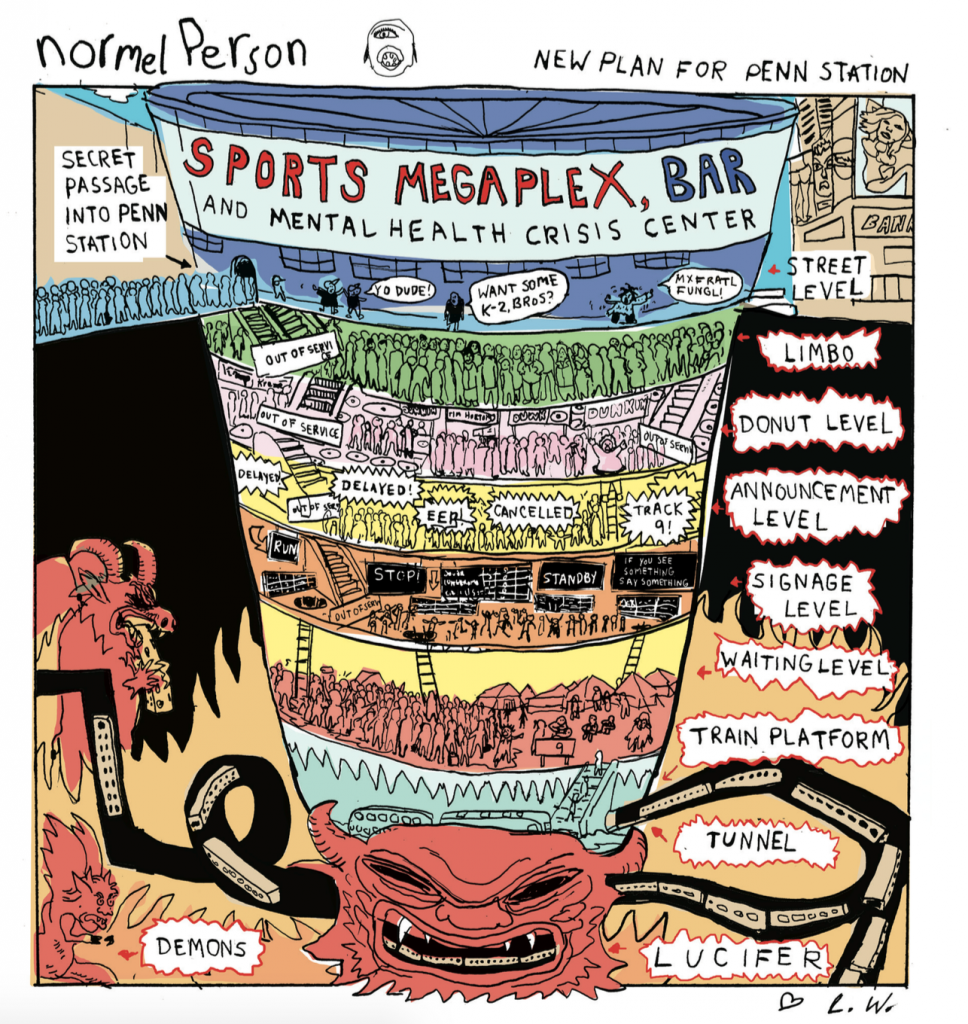
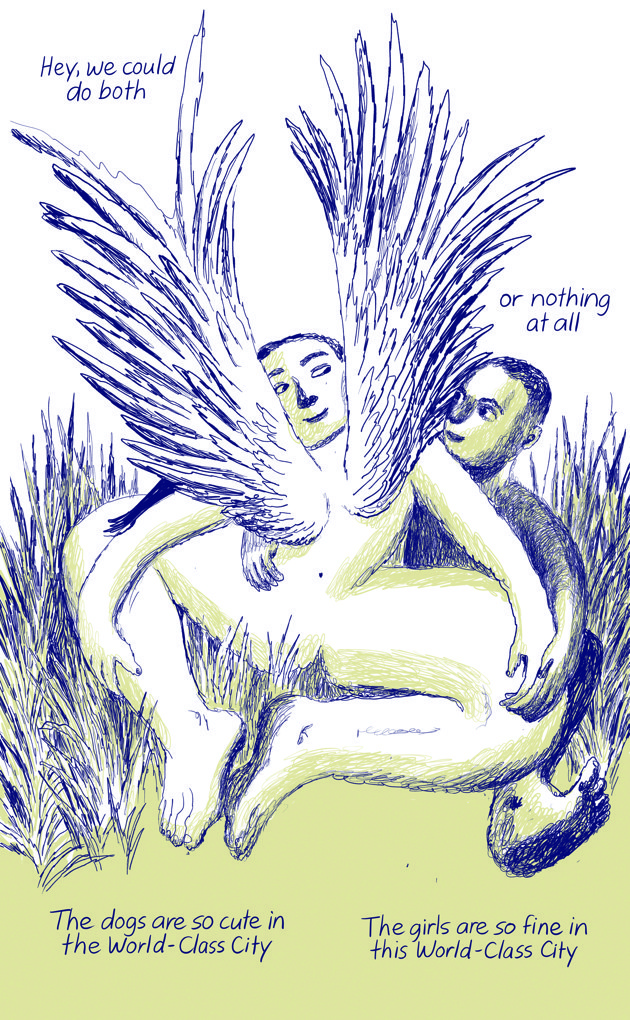
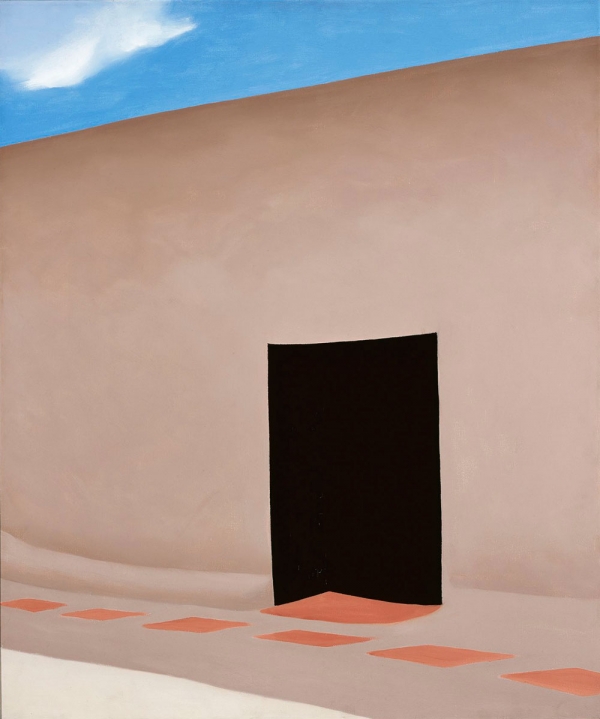
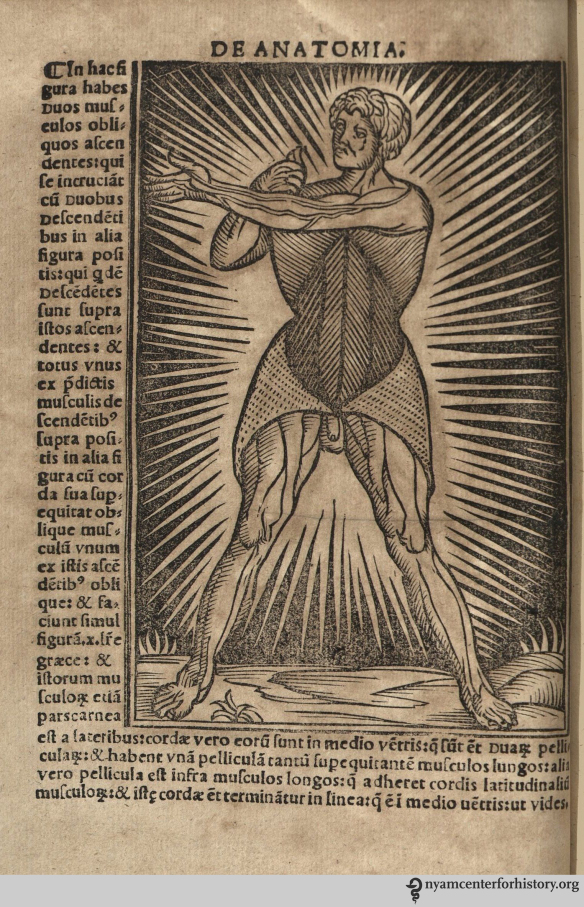
 —————————————————————————————————
—————————————————————————————————